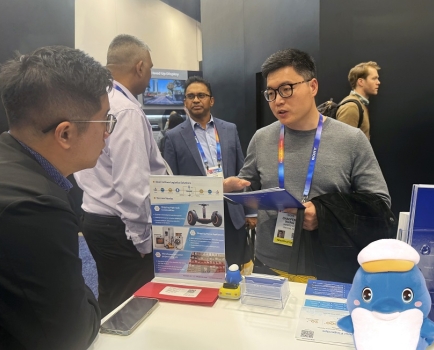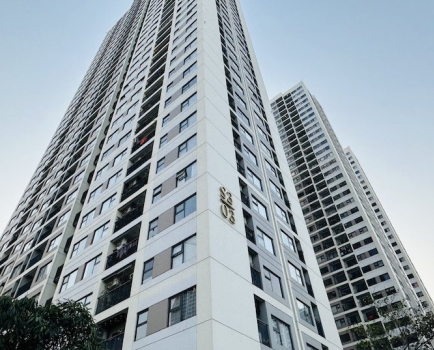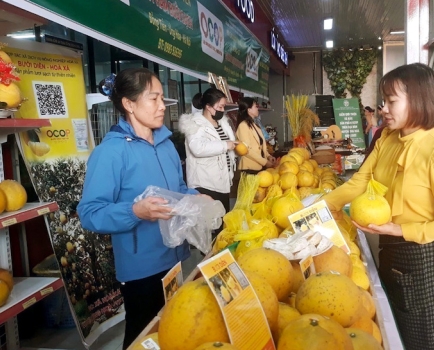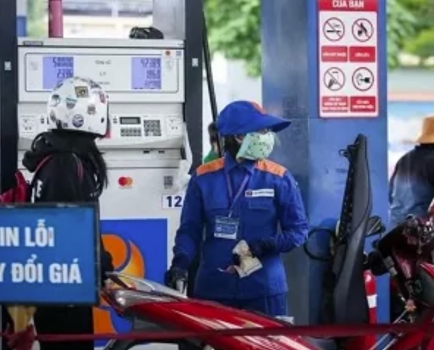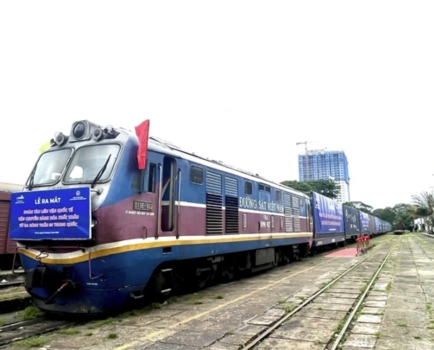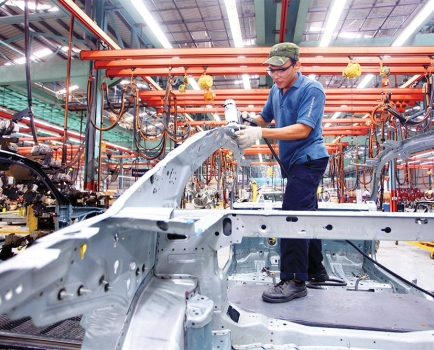Unblocking Capital Flows for “Rice Industry Revolution”
Wed, 01 Jan 2025 14:24:00 | Print | Email Share:
The project "Sustainable Development of One Million Hectares of High-Quality, Low-Emission Rice Farming Linked to Green Growth in the Mekong Delta by 2030" has received a positive response from the Can Tho Department of Agriculture, with 48,000 ha registered. Trung An Hi-Tech Farming Joint Stock Company has also registered with the Ministry of Agriculture and Rural Development to establish joint projects across Mekong Delta provinces and cities by 2030, covering 100,000 ha, including 15,000 ha in Can Tho city. Our reporter has an interview with Mr. Pham Thai Binh, Chairman of the Board of Directors of the Company, on this project.
 |
How will this project motivate the rice industry and rice companies today?
The Vietnamese rice industry, especially in the Mekong Delta region, has a lot of advantages bestowed by nature, so Vietnam's rice exports have quickly dominated many markets around the world. However, over the past many years, farmers have lacked production connection with businesses, so the rice industry has not developed sustainably. Farmers grow many different rice varieties which are purchased and processed by businesses into 5%, 10% and 15% broken and other grades and then sell them in the market.
In 2012, Trung An Company signed the first export contract of 2,000 tons of “single variety” rice at a price higher than US$70 per ton from the source that the company cooperated with farmers to produce in large-scale fields. Since then, Vietnam's rice export market has formed a premium single-variety rice segment. Other businesses started to purchase and classify rice into individual varieties to sell at higher prices. Nonetheless, the supply could not meet the demand because uniform rice can only be obtained when businesses cooperate with farmers to produce rice according to the given criteria and cultivation process of the large-scale field model.
However, not all businesses can do this because “linking production with consumption” between them and farmers in rice cultivation need money. From 2012 to 2015, many provinces and companies adopted the large-scale field model but “gradually shrank it” later. From 2019 to 2020, only a few companies (including Trung An) persisted in cooperating with farmers although they faced numerous difficulties but always hoped that the government would soon have a solution to provide capital for cooperation stages in the production chain.
We know that linking production is a prerequisite for sustainable paddy and rice development, so we try to maintain it. In this chain, our company is responsible for all stages such as providing early-season materials (including seeds, fertilizers, pesticides and agricultural services), providing interest-free loans for farmers for a 4-month period, settling payment for rice at the time of harvesting, installing rice dryers (farmers deliver fresh rice to the field), and installing silos to store dried rice. As they need huge fund but lack access to loans, most companies do not link up but choose to purchase the paddy.
The project demonstrates the great determination of the Government, the Ministry of Agriculture and Rural Development, provinces and cities. If the banking sector closely participates, it will remove credit bottlenecks. At that time, businesses will certainly actively participate and end the circumstance under which “Vietnamese rice is always discounted by Vietnamese businesses to sell.”
Moreover, given the higher demand for quality of life and rice, applying science and technology, green transformation, digital transformation, and circular economy becomes urgent. Following that trend, rice products labeled “low carbon” and produced according to a low-emissions model will have a stable consumer market with much higher selling prices. However, this can only be achieved when many businesses join large-scale fields. Vietnam’s agricultural sector cannot stand outside this trend.
What sets the One Million Hectare Project apart from the large-scale field model?
The large-scale field is a rice production and consumption link between businesses and farmers, aiming to increase the value and sustainable development of the rice industry! Launched in 2011, this model grew quite popular, but the extent was narrowed because businesses could not borrow capital to pay for the stages in the chain.
The Project is a higher development step of the large-scale field with more extensive and comprehensive regulations and criteria. Quantitatively speaking, the large-scale field has 70% content while the Project has 100%. The Project solves the bottlenecks that the large-scale field has not. In addition, the Project depicts many production processes and regulations in connection with the environment, greenhouse gas emission and green growth according to Vietnam’s commitments at the 26th Conference of the Parties to the United Nations Framework Convention on Climate Change (COP26).
How do businesses influence the Project's progress and performance?
In rice production linkages and according to the Project criteria, the role of businesses (including cooperatives) is central in building raw material areas for farmers to participate in the Project.
Specifically, according to the Ministry of Agriculture and Rural Development (Decision 2178/QD-BNN-KTHT dated July 4, 2024), businesses need to establish rice-farming projects and plans and submit them to the Provincial/Municipal People's Committees for approval to have the basis for implementation. When these projects and plans are approved, banks will have a legal basis for considering loans for businesses.
To carry out the Project, businesses and cooperatives must borrow capital to establish linkage. However, to produce high-quality, high-value rice, this linkage must be operated synchronously and smoothly.
Solving investment bottlenecks mentioned in the Project and especially root matters - capital and resources, businesses can operate smoothly. Only then can businesses and farmers master production processes, take the initiative in production and sales, increase the selling price and the profit for businesses and the income of farmers as well as the common value for the rice industry.

The large-scale model developed by Trung An Hi-Tech Farming Joint Stock Company
Responding to this “great revolution”, how has Trung An acted?
Trung An has always been concerned, strongly responded and actively put forth many opinions and proposals to carry out the Project.
To date, Trung An Hi-Tech Farming Joint Stock Company has completed conditions documents for formation of a 100,000-ha plan. Specifically, at the Project Implementation Conference on January 5, 2024, under the witness of central authorities and the Kien Giang Provincial Party Committee, the Kien Giang Provincial People’s Committee handed a permit to Trung An for carrying out 50,000 ha in the Long Xuyen Quadrangle. Besides Kien Giang, Trung An registered to implement 15,000 ha in Can Tho City, 15,000 ha in An Giang province, 10,000 ha in Dong Thap and 5,000 ha each in Soc Trang and Hau Giang provinces.
To have 15,000 ha in Can Tho City, from the existing 2,000 ha in Co Do and Vinh Thanh districts, Trung An is promoting the expansion of 5,000 ha in Thoi Lai district and other localities to have the targeted area and achieve the registered progress.
How will funding impact the Project's progress and performance?
As mentioned above, our company established a feasible project to borrow money from banks. When we have money, the next steps will be implemented. Notably, when we have enough resources, we will be able to implement the most comprehensive and effective plans. For example, when we invest in a hectare of rice, warehouses will be used to store the paddy to meet customers’ orders and market demand. We will have to treat rice husks, straws and bran after harvesting and processing the paddy. All must be calculated and implemented synchronously to bring high value, efficiency and sustainability. We see these values but cannot achieve them due to insufficient capital resources.
Overall, the Project needs US$3-4 billion in the short term and in the long term. This value seems to be big, but it is, in reality, insignificant when the Project is implemented effectively. Vietnam will still only export 8 million tons of rice a year, but the value will be up to US$7-8 billion, not US$4.6 billion as it is now. We only give such basic figures to see huge economic benefits if the Project has solutions for businesses to get loans.
The general challenge is completely clear. Central and local authorities and banks also clearly recognize this problem. The loan for the Project is completely within reach, but it is important that businesses can access it. To overcome this difficulty, on October 11, 2024, the State Bank of Vietnam issued three documents (No. 8363, 9864 and 8365), clearly stipulating processes, procedures and incentives. That means that the banking sector is also very ready with this policy. What is needed now is businesses need to implement it soon and localities need to get involved in operating it soon. Last but not least, in the coming time, banks also need to change their mindset. Instead of providing short-term loans such as loans for export contracts, banks should prioritize providing loans for production chains to make the Project more effective.
Thank you very much!
By: Ngo Khuyen, Vietnam Business Forum
Source: https://vccinews.com/news/59858/unblocking-capital-flows-for-%E2%80%9Crice-industry-revolution%E2%80%9D.html
---------------------------------------------
Same category News :



